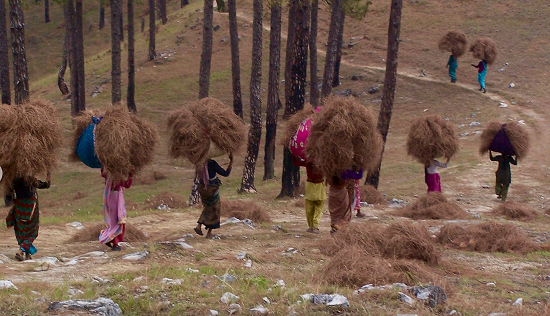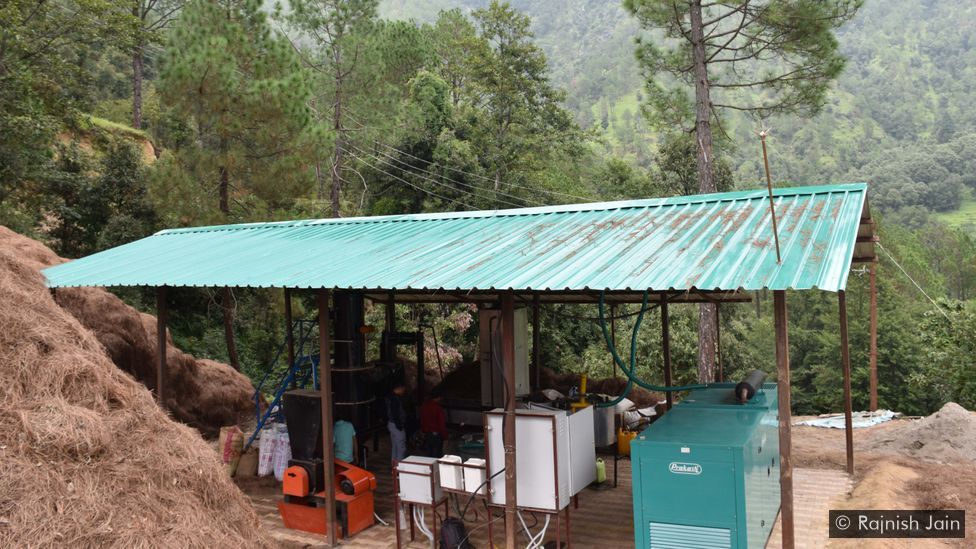Much of green energy is about utilising the resources that are available locally. Often, these are things like wind, water, and solar power. The Himalayan people are using something far less conventional: Pine needles.
In Nepal, Uttarakhand and Sikkim, the unique Himalayan Chir pine is a familiar feature of the forests. These forests were planted by British colonists and were used later on by governments for resin and timber, and they cover almost 400,000 hectares of land (1,540 square miles).
Every Chir tree produces thousands of long, resin-filled needles that drop to the forest floor and form a thick, soft carpet that smells wonderful when you walk on it. The needles, however, are so thick and hardy that they don’t decay, and effectively stop anything else growing where the host tree is establishing itself. This means slower-growing native trees like rhododendron, oak and sal robusta get suffocated by the Chir, this also means a less reliable supply of wood for cooking and heating with villagers having to walk miles to find wood.

The other issue is that those pine needles are packed with resin and fibre, making them highly flammable in the case of a fire. Each summer, thousands of hectares of forest in the region are destroyed by rampant wildfires. The forest fires that result from these needles cause extreme damage to the forest floor and the natural ecosystem as the charred ground leftover is not favourable for the indigenous grasses and trees, as well as the 1,800 plants used as medicinal herbs locally.
Thankfully, a community organisation called Avani in Uttarakhand has begun to curtail the problem, not by cutting down the trees themselves, but dealing with the core of the problem – the pine needles.

Image Credit: Down to earth
At first, the idea of using pine needles for anything useful was outlandish to the local people, but Avani knew there had to be a way of harnessing the energy. As part of their goal to combine traditional knowledge and craft with modern methods, they started to investigate if this energy-rich biomass could be utilised in a more productive way. Thus, they set about finding different technologies to use pine needles’ stored energy. That turned out to be a process called biomass gasification.
This simple but effective process, sees enormous bundles of needles bring collected and brought to a small, high-temperature cooking plant. The needles are then chopped and fed into a coking chamber which scorches them at a high temperature. This coking process chars the needle fragments which can be used as charcoal and produces fumes, like hydrogen and methane. These gases are then captured, cooled and used to power a gas engine generator that produces electricity.

Image Credit: Avani
Today Avani’s gasifier plants are producing reliable, cost-effective power and assisting to reduce forest fires in one stroke. They are currently looking at increasing the number of installation sites of this system, producing enough power for 12 million people and generating 2,000 jobs over the next five years.
Feature Image Credit: artsandculture.google.com
- Britain Set to Release the First Approved COVID-19 Vaccine in Coming Weeks - 6th December 2020
- 11 Most Cinematic Couples to Ever Grace the Silver Screen - 18th November 2020
- Iconic Brands That Have Prospered for Over 100 Years - 16th November 2020






